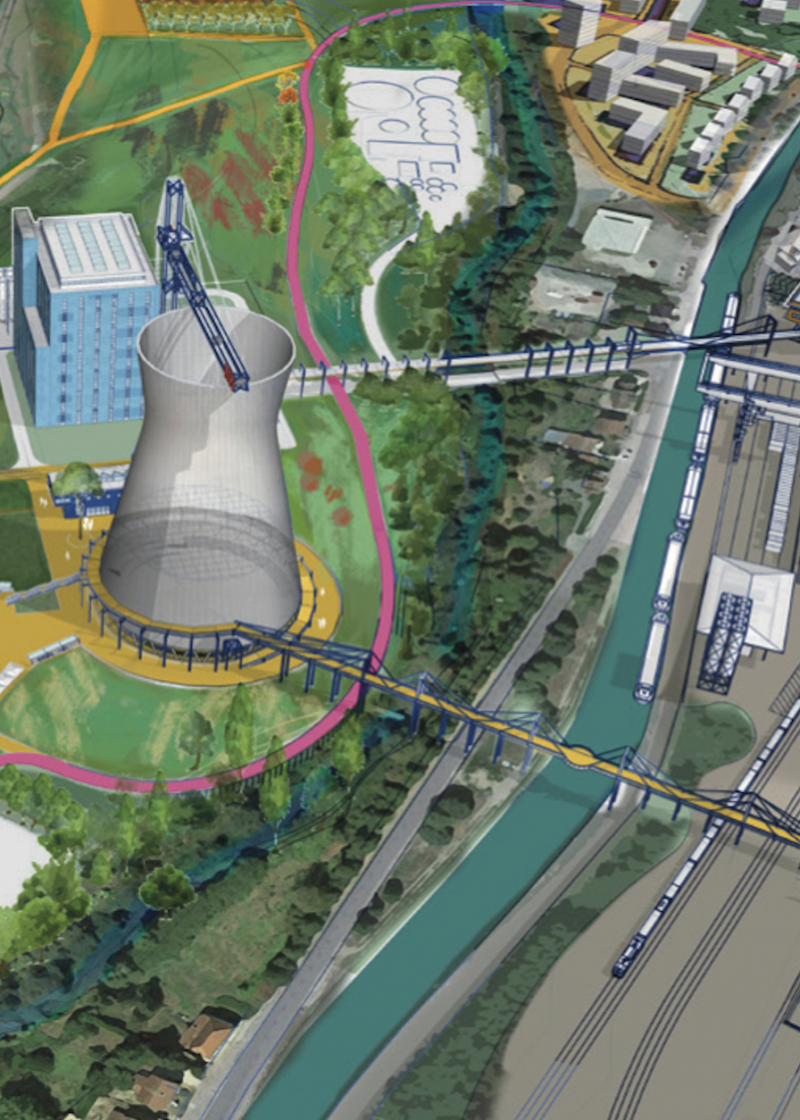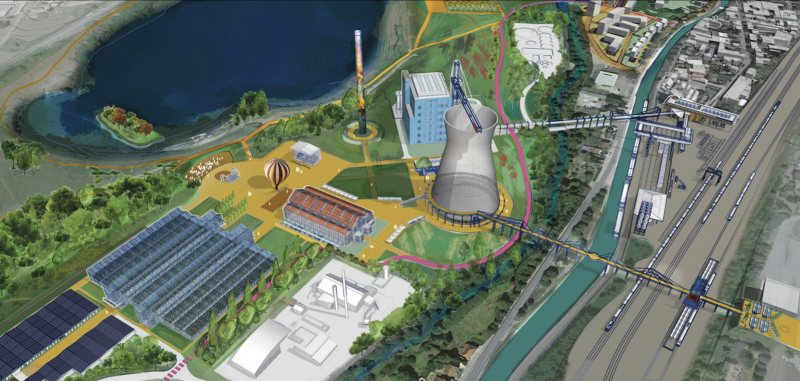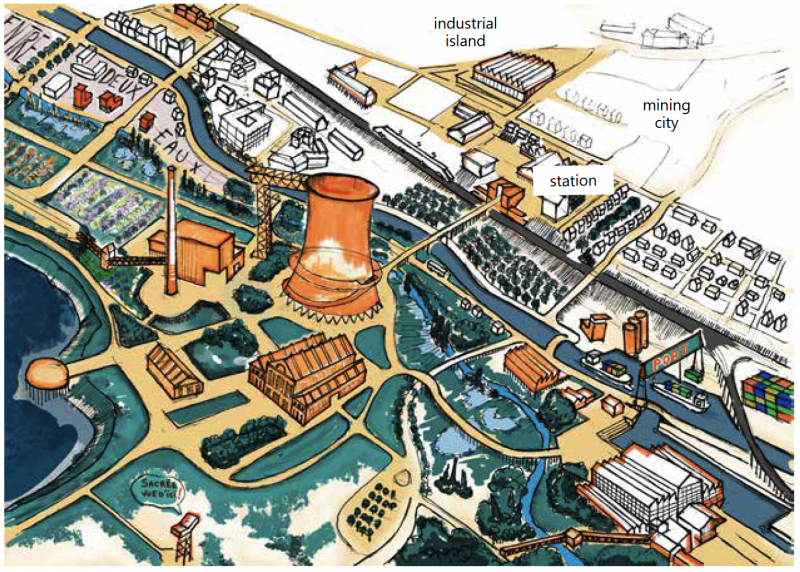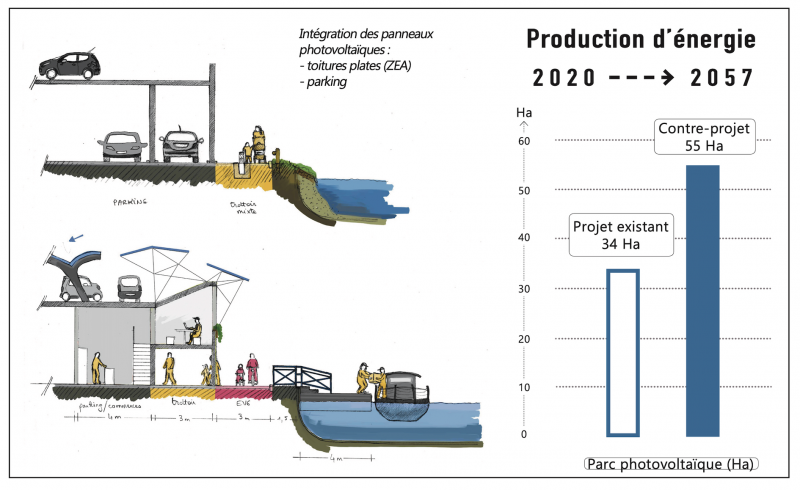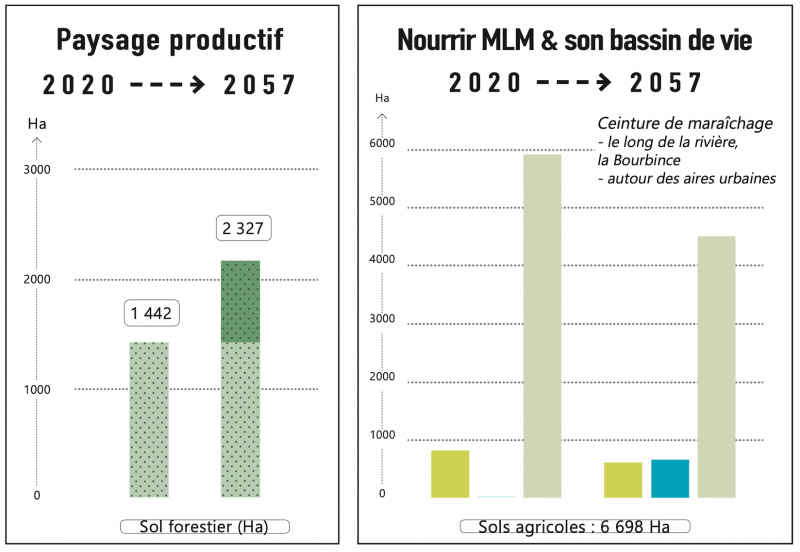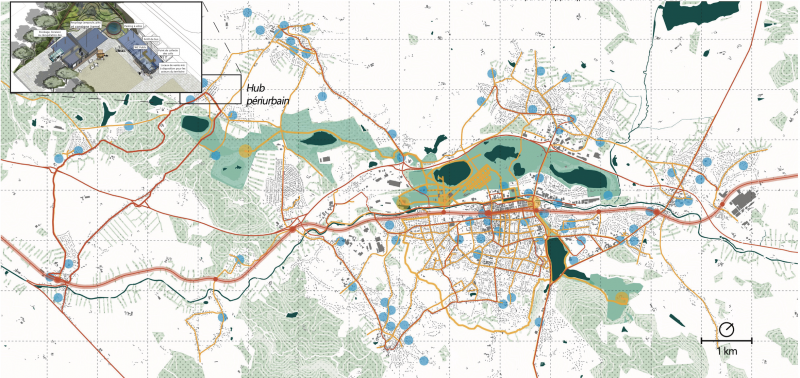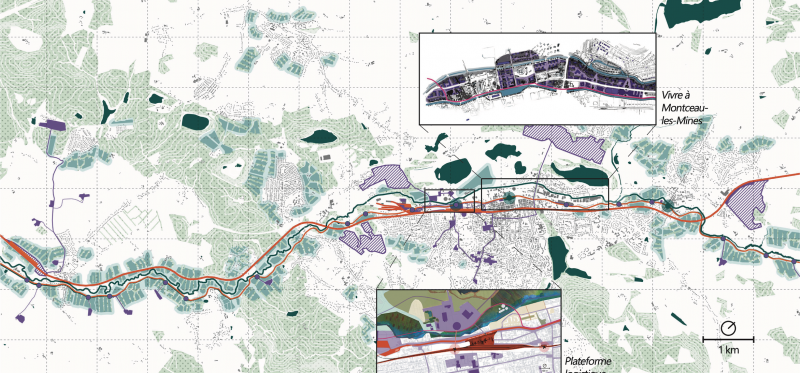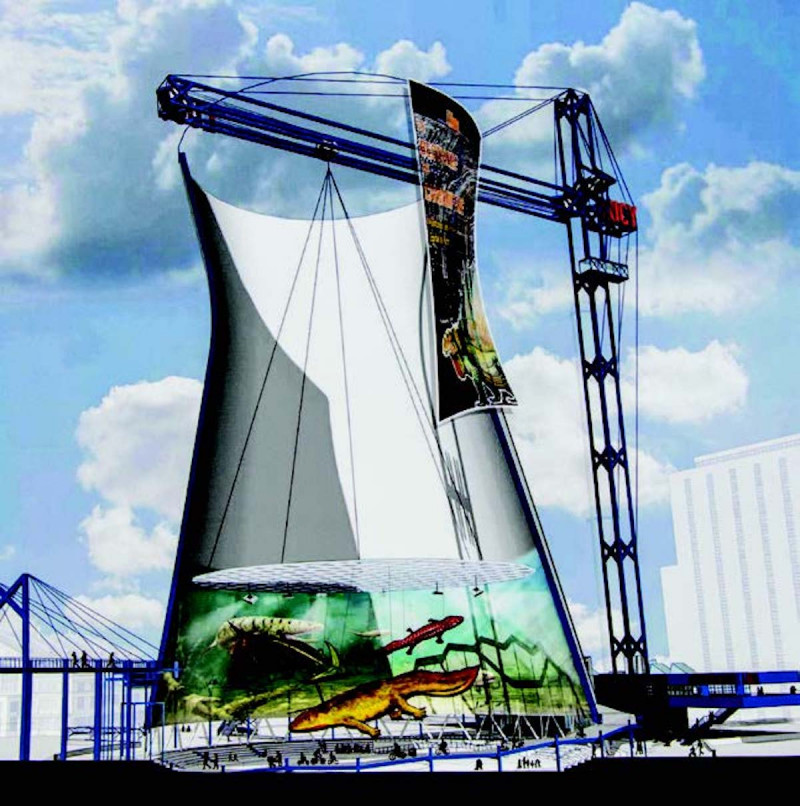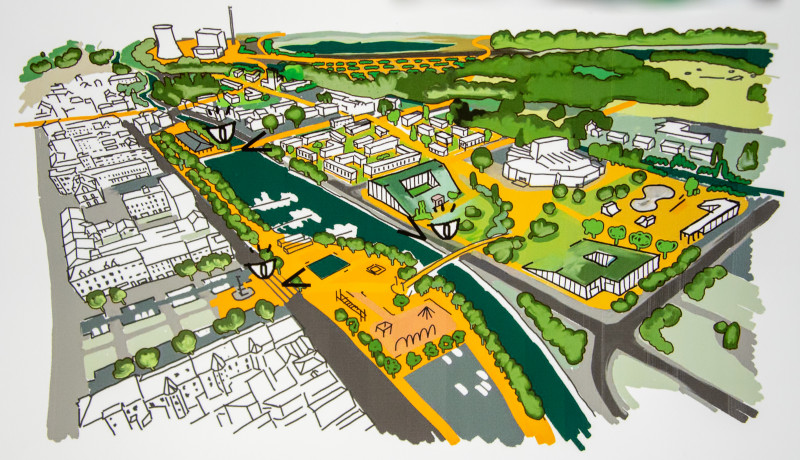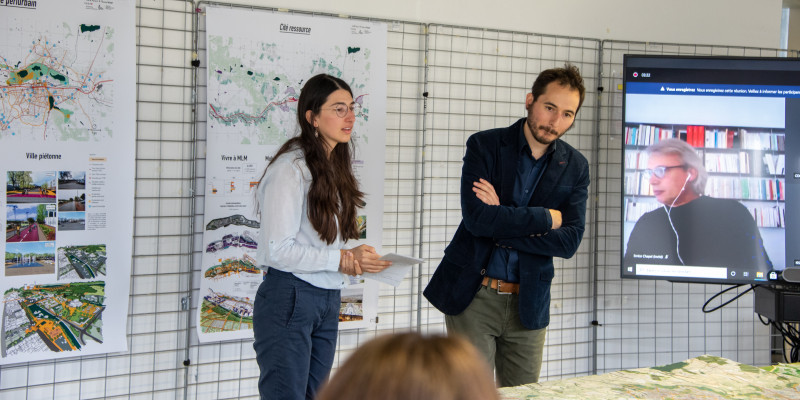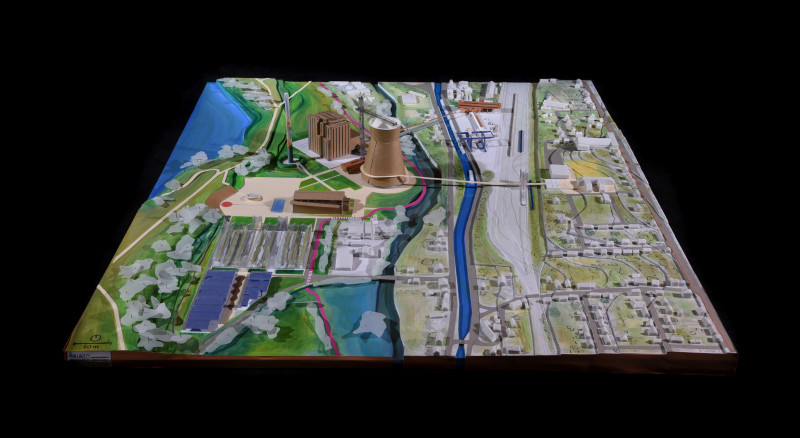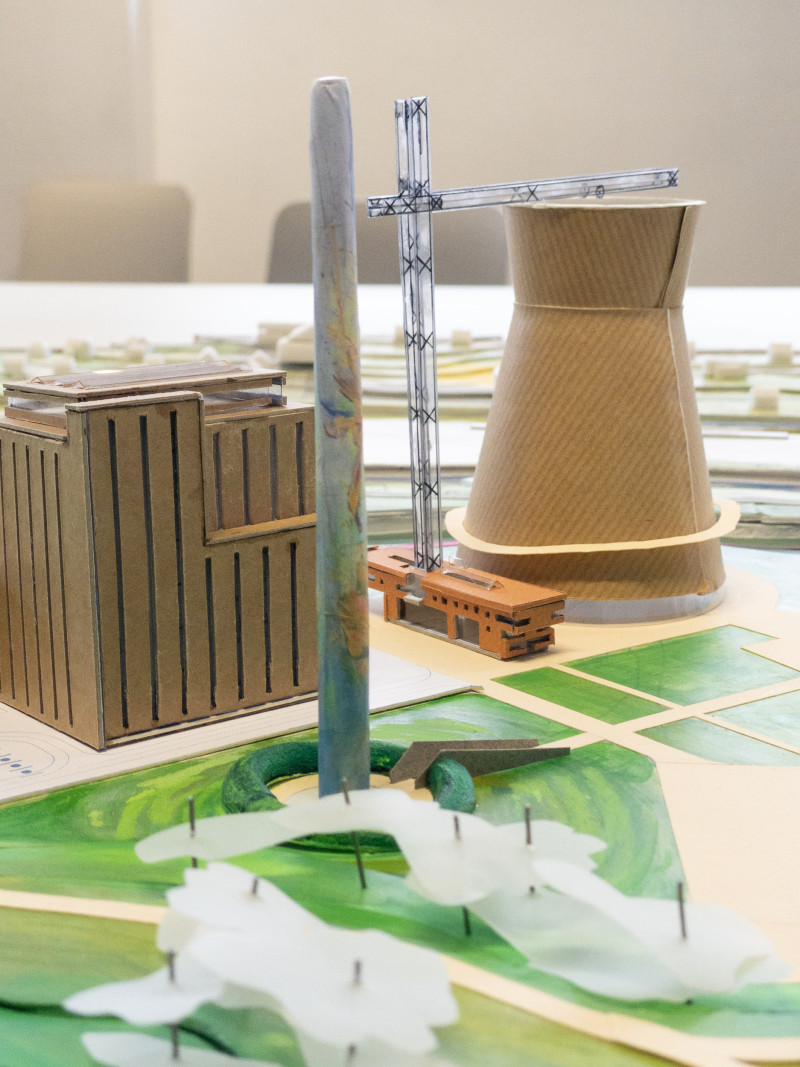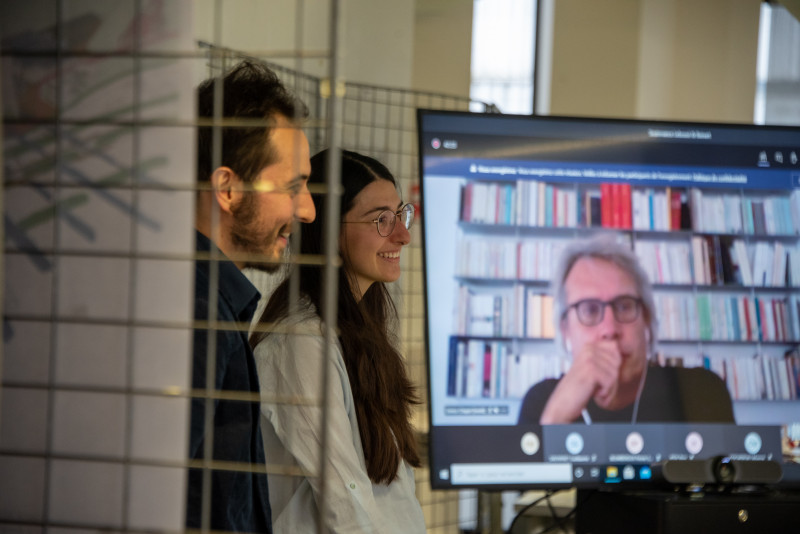The Moncellian Meshwork
The prospect of a collective will to achieve carbon neutrality in the functioning of society by 2050 invites the practice of urban planning to produce combinations of spatial organization conducive to low-energy lifestyles.
This project is located in Burgundy, in a former mining basin, and focuses specifically on the town of Montceau-les-Mines, while integrating the towns and villages that are interdependent with it.
In France, medium-sized towns (under 50,000 inhabitants) around which satellite villages are structured, like Montceau-les-Mines, form ambivalent territories whose identity is both strongly marked by industrial activities and close proximity to biodiversity
areas, forest or agricultural lands.
Unlike metropolises, medium-sized towns are dealing with vacant buildings and urban spaces, a latency of uses that is the result of economic and demographic decline. Mobility, almost exclusively performed by car, is induced by a dispersion of functions in the territory.
This spatial organisation, coupled with urban sprawl, is both cause and consequence of spaces dedicated to the profusion of vehicles. All flows are therefore highly dependent on fossil fuels.
The infrastructures that support and enable mobility, however, form obstacles to the deployment of all other low-carbon alternative mobilities and their grids.
In light of these challenges, we ask ourselves what landscape, urban and architectural resources should be activated to achieve a carbon-free spatial organisation?
Today, the expressway that runs through Montceau-les-Mines collects most of the flows, those of people and goods. Faced with this reality, the project is therefore trying to create a combination of the three other mobility networks present on the territory (a regional railway, the Canal du Centre and the Euro Vélo 6) which are the most likely to offer low-energy modes of transport.
The reactivation of these networks is a lever for the reconversion of the industrial brownfields bordering them. In these terms, the project is particularly interested in the disused site of the Lucy thermal power station, which is becoming a centre of gravity for the territory. Hosting programs such as a fairgrounds, a market hall, a performance venue, food workshop and a logistics platform.
Three approaches create a hierarchy within the project methodology, and each one addresses the notion of mobility.
The « landscape manufacture » deals with the productive, contemplative and festive functions of the rurban landscape.
The « urban link » approaches public space as an articulation of platforms and corridors, dedicated to the amplification of economic and social interactions. This networking takes place through active mobility (walking and cycling), by converting the space dedicated to cars. Bicycle and pedestrian networks are conceived here as both links and spaces, able of accommodating different rhythms of use, from the daily journey to the occasional stroll.
The « resource city » is a process of inversion of the gaze, where any latent space is a potential project material. The project circumscribes urban areas with a view to preserving the arable land resource that surrounds them. The evolution of the city is no longer carried out by expansion but by the re-appropriation and transformation of pre-existing places and buildings.




